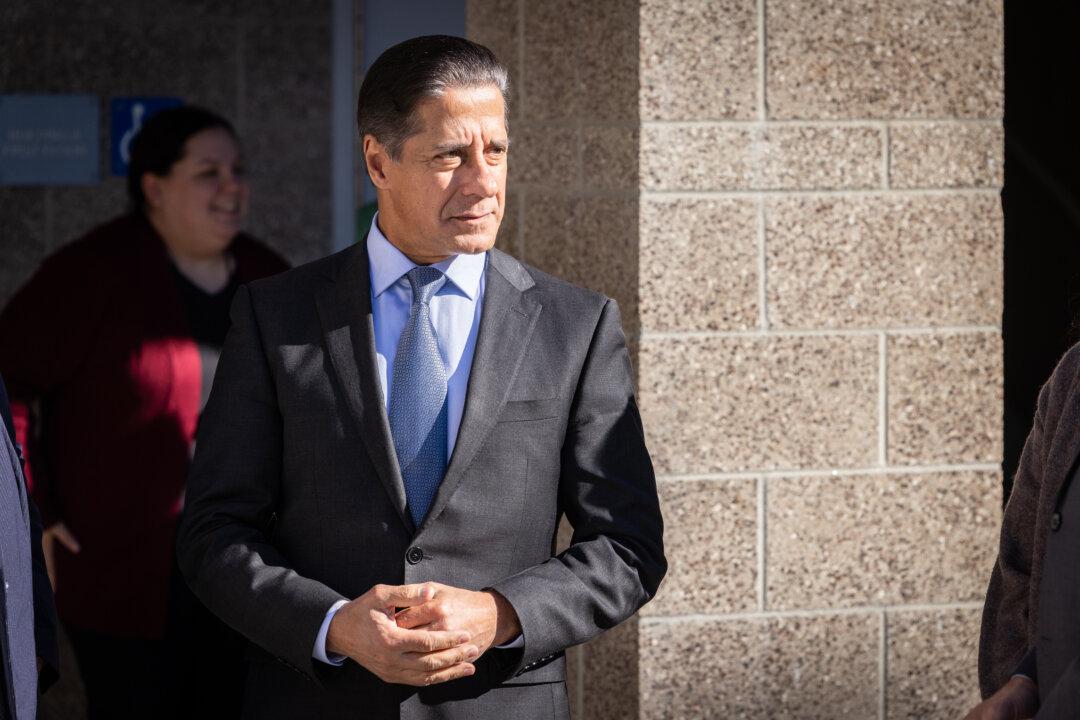California Gov. Gavin Newsom has proclaimed a state of emergency over a fast-growing fire in San Bernardino County that was covering 32 square miles as of Sept. 9.
The declaration will help fire officials battle the Line fire, which started at about 6:30 p.m. local time on Sept. 5. The state also secured a grant—approved by the Biden administration—from the Federal Emergency Management Agency to help ensure that vital resources are available to help fight the fire.
The cause of the fire, which started near the city of Highland, about 65 miles east of Los Angeles, remains under investigation, according to the California Department of Forestry and Fire Protection (Cal Fire).
More than 1,700 fire personnel from several local, state, and federal agencies were attacking the fire on Sept. 9. The crews had reached about 3 percent containment of the fire’s perimeter, according to the U.S. Forest Service.
More than 36,000 homes and buildings were threatened in the mostly rural area of San Bernardino County.
“While weather conditions will start to moderate in the afternoon, continued critical conditions may allow fire activity to remain active,” the agency stated. “Weather changes begin to occur overnight, helping to moderate fire behavior.”
Winds were also expected out of the southwest, ranging from three miles per hour to six miles per hour, with gusts of up to 12 miles per hour.
Smoke in the morning could spread throughout the region, according to fire officials.
Public Safety
Residents of several surrounding communities, including Running Springs and Arrowbear Lake, Forest Falls, Mountain Home Village, and other less-populated areas, have been ordered to leave.No homes or structures had been destroyed by the fire as of Sept. 9, according to fire officials.

Many other surrounding areas are under evacuation warnings, including Angelus Oaks, Seven Oaks, and the communities of Cedar Glen, Lake Arrowhead, Crestline, and Valley of Enchantment.
While smoke can be seen at Big Bear Lake, a popular tourist destination for Southern California residents and visitors, the community has so far escaped the flames, according to community fire officials.
The fire department warned residents that the fire could progress to a point at which evacuation warnings or orders and road closures could happen. Its department representatives were in direct communication with the team managing the fire, according to officials.
An evacuation shelter was set up at the San Bernardino County Fairgrounds on Seventh Street in Victorville and at the Jessie Turner Health and Fitness Community Center on Summit Avenue in Fontana.
An animal evacuation shelter was also opened at the Devore Animal Shelter for large and small animals. The facility is on Shelter Way in San Bernardino.
Authorities have closed Highway 18 from Kuffel Canyon to the Big Bear Dam. Running Springs residents who are under evacuation orders were able to leave using Highway 18, but they were not allowed to return, according to Cal Fire.
Highway 330 remains closed from Highland Avenue to Highway 18 in Running Springs.
Garnet Street in Mentone is closed, and State Route 38 is closed at Bryant Street. Residents who are under an evacuation warning in Angelus Oaks are being routed toward Big Bear.







